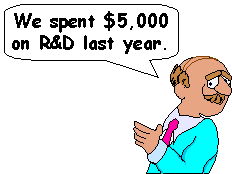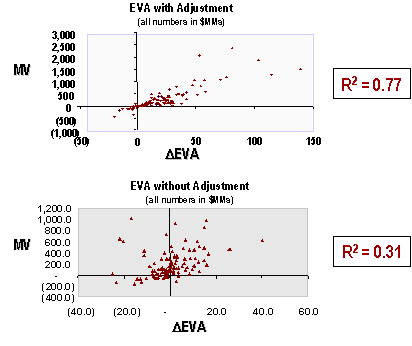Determining Materiality
We can judge materiality with respect to a particular potential adjustment by asking:
To what degree would a change in a certain activity have a significantly different impact on Baseline EP versus adjusted EP?
The threshold for "significantly different impact" is an impact large enough to affect behavior.
Example: Disposition of assets - Does size matter?

Gain from the sale of assets is relatively small compared to overall income...
> Adjustment may be unnecessary
Potential gains are significant enough to reward the premature sale of assets...
> Adjustment may be necessary
Beware! Look ahead. If the gain or expense has historically been modest, that might (or ought to) change with a change in measurement or strategy.
Example: Capitalizing R&D - Incremental impact

R&D relatively small because the business is not R&D intensive, and never will be...
> Adjustment may be unnecessary
R&D expense is similar each year; therefore aggregate numbers look more continuous...
> Would not rule out adjustment
R&D expenditure is irregular, but often significant...
> Adjustment may be necessary
Beware! Distinguish between incremental impact of treatment on decisions and its aggregate impact on the bottom line
Example: Reversing depreciation - Does the market care?
Presumably, the market is looking at the company in a manner consistent with changes in EP over time. Alternative treatments in the definition of EP can be tested against market value to see which treatment better explains value.
For example, if we purchase investment property in a populated area, much of the value is likely to be the value of the permitted land versus the cost of buildings on the land. The land is typically appreciating over time, even though most of the purchase price of the property is depreciated on a straight-line basis. In certain cases, if we replaced depreciation of our real estate assets with an adjustment reflecting appreciation with inflation, we get a significantly better relationship between our EP measure and the value it is supposed to represent.

In this case, investors are looking at the company in a manner consistent with the adjusted EP (with the higher R2 in the example above). Thus, value may be significantly compromised if management seeks to maximize unadjusted EP (with real estate assets being depreciated) rather than focusing upon adjusted EP (where real estate assets are presumed to keep up with inflation).